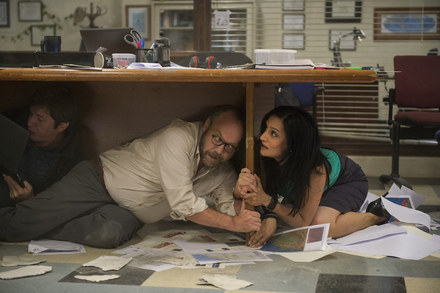Red Teaming for Emergency Management
How do we know that decisions taken in an emergency are appropriate? Ensuring appropriate checks and balances can help reduce the influence of groupthink or any other of these decision making biases.

In high stress situations, when the stakes are high, like in an emergency, could emergency managers could do to support those making the strategic decisions? Do they understand the complexity of the issues? Have they considered all of the options? Have they thought through all of the ramifications of their decisions? Are their decisions justifiable and defensible?

Back in 2014 I binge-watched a TV series called The Newsroom, which shows what goes on ‘behind the scenes’ to make a fictional American news programme.
In the second season, the group of journalists close in on a story relating to the use of chemical weapons by the US army in Pakistan. Whilst the team are confident in the authenticity of the material, they don’t want to run with the story until they are absolutely sure.
Enter the Red Team. A group of researchers and producers deliberately isolated from the investigation so they can later examine the facts and determine whether to air the story.
Here’s the trailer for Season 1 of The Newsroom
What if we did something similar in emergency management? This is how it could work:
- There would be no change to the nominated individuals who are already ‘on-call’ to provide strategic decision making (for simplicity, let’s call them the Blue Team)
- Another set of individuals would be identified as the Red Team
- Both teams require the same level of training, briefing and access to information
- In addition, the Red Team needs an awareness of the psychological factors which influence decision making
- The Red Team can only be summoned at the request of the Blue Team – this avoids interference or overstepping their role of critical friend
Should the Blue Team come up against a problem, or not reach agreement on a course of action, the Red Team could be called to offer a view, or to mediate between differing perspectives. Having maintained a distance, the Red Team would poke holes and identify the risks and bugs that insiders might have missed.
There are a number of drawbacks to implementing a Red Team approach. These include the increased resource required to staff dual roles. Culturally, it’s new, and there would undoubtedly be some reticence to decisions being challenged where they previously haven’t been.
I recognise these practicalities may make Red Teaming impossible to achieve in reality. However, the process could be useful in exercises or in thinking about strategic decision making processes.
As noted in my last post, this might not yet be a fully formed idea, and I’d be interested in any thoughts that colleagues might have about whether they have seen this approach used, or could see any reasons that it would not be something to experiment with.
Thinking about starting a business or getting a tattoo? Maybe that’s another area where a Red Team could help ‘avert disaster’?





